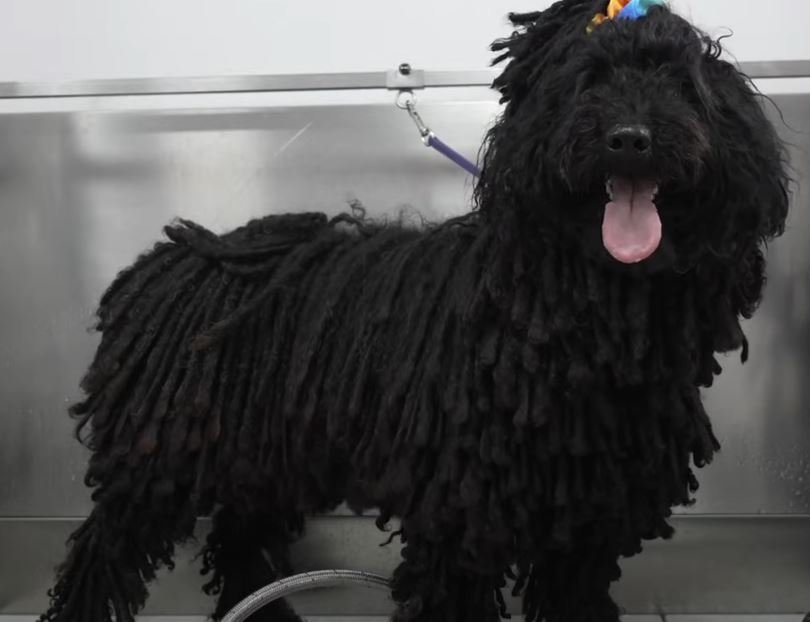
A herding dog native to Hungary, the Puli is easily recognizable by its distinctive corded coat. It seems like it has natural dreadlocks with its tightly curled fur. This little to medium-sized dog breed is quick on its feet, bright, and rooted in its heritage. The Komondor is a bigger relative that shares these features.
Quick Facts About the Puli
| Feature | Details |
|---|---|
| Origin | Hungary |
| Coat | Corded, resembles dreadlocks |
| Colors | Black, white, gray, cream |
| Height (Females) | 16.5 inches |
| Height (Males) | 17 inches |
| Weight | 23–25 pounds |
| Lifespan | 10–15 years |
| Temperament | Intelligent, loyal, protective |
| Exercise Needs | High |
| Grooming | Regular maintenance for cords |
Background and Events
With a lineage that goes back over two millennia, the Puli is among the most ancient herding breeds. Sumerians may have exploited dogs similar to the Puli to herd sheep, according to ancient accounts. Their remarkable talent at herding cattle rendered them priceless. They eventually came to represent undying devotion in Hungarian society.
Features of the Body
The coat color of a puli can be any solid color from black to white, gray, or cream, however it is most commonly black. Pulis with a cream coat frequently have black masks. Females of this species are expected to reach a typical height of 16.5 inches, with males standing only slightly taller at 17 inches. The range for their weight is 23–25 pounds.
A Timeless Jacket
As a Puli reaches maturity, its coat will naturally develop into cords. The undercoat and outer coat combine to form these cables. Thin, rope-like cords that can reach ground level are maintained through grooming. Unlike other herding breeds, their coats do not shed.
Beauty Requirements
The corded coat of a Puli needs constant brushing and combing to keep it neat and untangled. Proper cable separation and frequent washing are the owners’ responsibility. Maltreatment can cause unpleasant mats. Though many appreciate the classic style, some choose to keep their coats shorter.
Personality and Action
Pulis are full of life, smart, and watchful. Afraid of outsiders, they are devoted family members first. They are born protectors because of their tendency to herd. Their boundless energy and lack of self-control necessitate early and consistent training.
Handling a Puli Pet
With plenty of room to run around and play, this breed can really shine. While pulis thrive in natural settings, they do fine in houses with gardens. Getting some mental exercise and going for walks regularly are musts. They could get too reserved or too hyperactive if they don’t get enough to do.
Puli’s Function in the Herd
Pulis and Komondors used to work hand in hand to keep livestock safe. Pulis was in charge of the herd during the day, while the Komondors were out guarding at night. They were vital to Hungarian pastoral life because to their quickness, nimbleness, and ability to solve problems.
An Unwavering Friend
Pulis develop close relationships with their loved ones. Their carefree and loyal spirit remains with them forever. They work great for families with kids. They have a tendency to be self-reliant, yet they are trainable and fun to be around.
The Komondor in comparison
Although it is bigger and mostly a guardian, the Komondor shares many characteristics with the Puli. The corded coats are a distinctive feature of both breeds. Komondors, on the other hand, usually have white fur, whereas Pulis can be any shade of brown. They represent the rich herding traditions of Hungary when seen as a whole.
The Pulis of Today
The Puli is now an endangered breed that is well loved. Fans all across the globe are captivated by its one-of-a-kind beauty and lively attitude. As pets and competitors in dog sports and agility, they are second to none. They never fail to turn heads with their unique chords.
FAQs
- What makes the Puli unique?
Its corded coat resembling dreadlocks sets it apart from other breeds. - Are Pulis good family pets?
Yes, they are loyal, playful, and great with children. - Do Pulis shed fur?
They have non-shedding coats, making them low-maintenance in this aspect. - How much exercise does a Puli need?
They require daily walks and space for play. - Can the Puli’s cords be trimmed?
Yes, though the traditional corded look is often preferred. - What is the Puli’s role in herding?
Pulis manage livestock with speed and agility, complementing larger guardian breeds.
